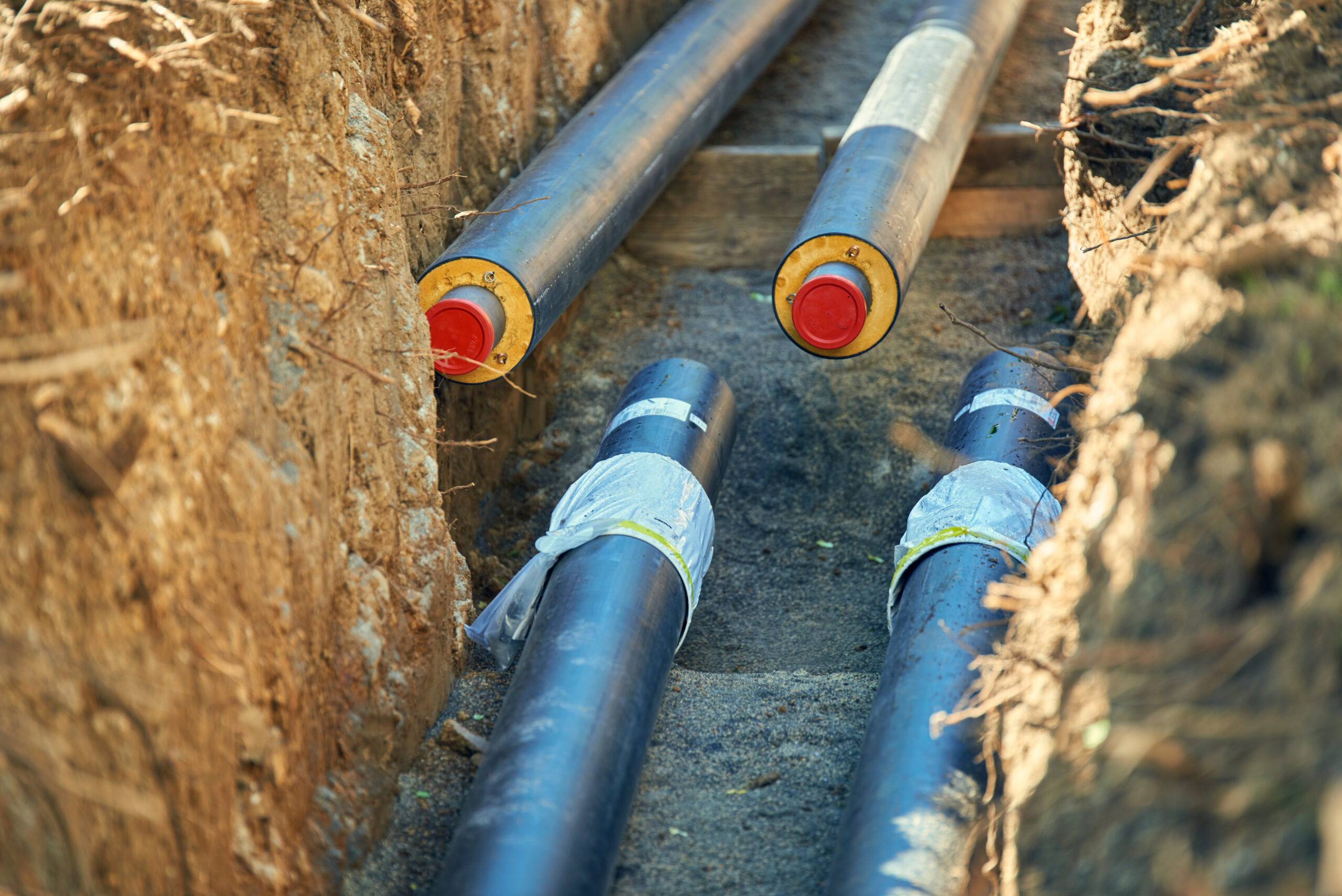Download our publication on district energy
Discover our white paper on district energy – the backbone of a flexible, resilient and efficient energy system.
Explore the publicationPerspective
District energy
Digitalisation
District heating
+2



Discover our white paper on district energy – the backbone of a flexible, resilient and efficient energy system.
Explore the publicationDistrict heating is a highly efficient and sustainable method of providing heat to communities. At its core, a district heating system uses heat sourced from central locations and distributes it through pipelines to end users in residential, commercial and industrial buildings. Opting for a district heating system as opposed to individual solutions has major economic, environmental and social benefits.
A flexible and sustainable solution
Individual heating solutions allow only one specific type of fuel, e.g. oil or natural gas. For the end user, this means that their heating bill is exposed to price increases on a specific fuel. District heating, however, is fuel-agnostic and fuel sources can be changed quickly and easily.
This makes it possible to take advantage of market forces driving price changes across different types of fuel markets. For instance, electricity can be used to produce heat when prices reach virtually zero due to high production from wind turbines and other renewable sources. District heating also permits the use of low-temperature heat, especially when combined with heat pumps. Thus, heat with low or negative value in one place, e.g. industrial surplus heat, can create significant value elsewhere by substituting fossil fuels and increasing energy efficiency.
Established district heating systems often starts small and grow, merging over time to gradually cover entire urban communities. District heating systems are inherently local and can be adapted to various urban and suburban settings, making them versatile and applicable across diverse regions.
Societal resilience to the benefit of us all
In the ongoing green transition of our energy systems, it is less costly to change fuel sources in a centralised system than to replace boilers in thousands of individual households. On a societal level, the fuel flexibility of district energy increases the security of supply and production efficiency. In turn, societal ambitions and political targets of increased independence from fuel imports and reduced CO2 -emissions can more easily be achieved.
This is especially true when district heating systems are equipped with the monitoring and control mechanisms that enable smart energy management and system maintenance. Crucially, the benefits of an intelligent centralised system are felt by the consumer: Optimising energy us and reducing heat loss and consumption increase comfort, leading to long-term energy savings and lower energy bills.
Globally, there is an urgent need to optimise the use of all available sustainable energy resources. From a heating and cooling perspective, this requires a system that is flexible, resilient and intelligently connected to the energy system. District energy provides an answer to these challenges and should therefore be considered the energy backbone of tomorrow’s communities.

A district heating system can deliver cost-efficient heating to consumers from various energy sources. All Danish district heating systems use at least two sources to balance loads and operations most efficiently. Depending on the local system design, sources can be used in combination for baseload production, others provide flexibility and some are reserved for peak loads. Some energy sources like waste, fuels or electricity are transformed through a heat production unit like a CPH plant or heat pump, while others such a solar thermal or sufficiently high temperature waste heat are applied directly. Some of the energy is stored at a storage facility, which makes it possible to decouple the production from consumption over shorter or longer periods of time – even months. No matter the source, the heat is ultimately distributed through a network of energy efficient pipes to the end-users in homes, industrial areas and cities who need it.
solutions
Combined heat and power production
+6
solutions
Energy efficiency in buildings
+2